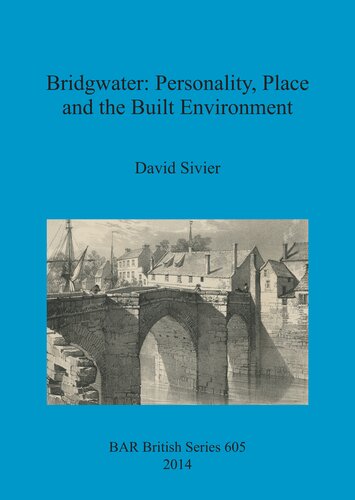

Most ebook files are in PDF format, so you can easily read them using various software such as Foxit Reader or directly on the Google Chrome browser.
Some ebook files are released by publishers in other formats such as .awz, .mobi, .epub, .fb2, etc. You may need to install specific software to read these formats on mobile/PC, such as Calibre.
Please read the tutorial at this link: https://ebookbell.com/faq
We offer FREE conversion to the popular formats you request; however, this may take some time. Therefore, right after payment, please email us, and we will try to provide the service as quickly as possible.
For some exceptional file formats or broken links (if any), please refrain from opening any disputes. Instead, email us first, and we will try to assist within a maximum of 6 hours.
EbookBell Team

0.0
0 reviewsBridgwater: Personality, Place and the Built Environment traces the history and development of the town of Bridgwater as a physical entity from its origins to 1700. This includes not only the physical layout of the town as a whole, but also the plan and structure of its individual plots and buildings. These have been reconstructed through the hundreds of leases from the medieval period and sixteenth and seventeenth centuries preserved in the town's archives. Although the area around Bridgwater was settled in prehistory and Roman times, Bridgwater itself first appeared in the early eleventh century. In contrast to previous histories of the town, the book shows that rather than being the village depicted in the Domesday survey, Bridgwater was founded as a bridgehead burh by its Anglo-Saxon lord, Maerleswein. It was later promoted to Anglo-Norman borough c. 1200 by the Devon magnate, William de Brewer, who added the castle and parks as part of a planned aristocratic landscape. The book places the settlement and development of the town within the context of the wider changes in the landscape of Somerset, such as the colonisation and drainage of the Levels, the expansion of road and river communications and the urbanisation of Europe from the tenth century onwards. It also examines the effect of the late medieval urban crisis and the Reformation on the physical structure of the town.